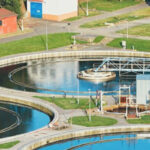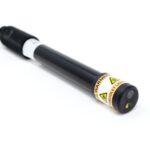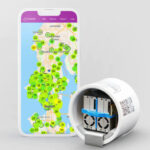The U.S. Environmental Protection Agency (EPA) has ongoing efforts to address the unintended contamination and purposeful contamination of the nation’s water supplies. Sensing technologies are an integral part of the strategy.
In 2023, the EPA proposed new limits to drinking water contamination from toxic “forever chemicals” or per fluoroalkyl and polyfluoroalkyl substances (PFAS). Used widely as industrial chemicals and in consumer products for metal plating, lubricants, paints, polishes and more, PFAS are known for their durability and resistance to heat, oil and water. However, as toxic chemicals that have an almost unlimited lifetime in water, their presence and subsequent control requires government regulations.
The proposed National Primary Drinking Water Regulation (NPDWR) would establish legally enforceable levels, called maximum contaminant levels (MCLs), for six PFAS known to occur in drinking water. The six PFAS are perfluorooctanoic acid (PFOA), perfluorooctane sulfonate (PFOS), perfluorononanoic acid (PFNA), perfluorohexane sulfonate (PFHxS), perfluorobutane sulfonic acid and its potassium salt (PFBS), and hexafluoropropylene oxide (HFPO) dimer acid and its ammonium salt (GenX) chemicals. MCLs of 4 parts per trillion (ppt) for PFOA and 4 ppt for PFOS were announced with the other four PFAS getting a hazard index. The hazard index is a tool used to address cumulative risks from mixtures of chemicals. From a sensing perspective, the EPA notes that available technologies exist to monitor for these six PFAS.
Traditional technologies include liquid chromatography–mass spectrometry (LC-MS) and gas chromatography–mass spectrometry (GC-MS). However, ongoing efforts to achieve in situ detection, ease of use, and low cost are expected to lead to an integrated smart environmental management system.
Water quality tools
A previously existing aspect of the EPA’s water quality efforts involves water quality monitoring by sharing and retrieving data. The Water Quality Exchange (WQX) allows data partners to submit water monitoring data to EPA. In contrast, the Water Quality Portal (WQP) allows anyone, including the public, to retrieve water monitoring data from EPA.
According to an EPA Technical Brief, “Water distribution systems are routinely monitored to ensure that drinking water meets mandated standards and that treatment processes are performing as intended. Online sensors measure water quality in real-time and have the potential to serve as an early warning for an intentional contamination event.”
EPA’s research on sensors is in support of the Water Security (WS) initiative, which is developing contaminant warning systems. Free chlorine and total organic carbon (TOC) sensors are recognized as the most successful in detecting a number of chemical and biological contaminants.
The EPA’s Water Sensors Toolbox is a collection of resources and information related to EPA research that uses, evaluates and/or develops water sensors. As a part of these resources, the uses for water sensors include:
- Monitoring water quality
- Detecting contaminants
- Monitoring septic systems for discharges
- Measuring levels of nutrients in surface waters
- Detecting chlorophyll α, which can in turn be used for predictions (for harmful algal blooms and/or cyanotoxins in watersheds)
- Measuring the use and effectiveness of wastewater and drinking water treatment
- Monitoring distribution systems
In addition to providing physical characteristics of water, such as water presence/absence, water level, and discharge, other applications of water sensors include:
- Measuring water quality parameters, such as pH, water temperature, conductivity, dissolved oxygen, and turbidity.
- Monitoring for contaminants, such as cyanobacteria and cyanotoxins, chlorophyll and algae, nutrients and nutrient species, arsenic, bromine, calcium, magnesium, and chloride.
While EPA’s focus is on using available sensors, some effort is aimed at developing sensors for specific contaminants, such as arsenic detection. EPA Challenges are issued to encourage inventors and entrepreneurs to develop new sensors.
References
https://www.epa.gov/system/files/documents/2022-06/drinking-water-ha-pfas-factsheet-communities.pdf
https://www.epa.gov/system/files/documents/2023-04/Fact%20Sheet_PFAS_NPWDR_Final_4.4.23.pdf
https://www.ncbi.nlm.nih.gov/pmc/articles/PMC7407801/
Water Quality Data | US EPA
https://cfpub.epa.gov/si/si_public_record_report.cfm?Lab=NHSRC&subject=Homeland%2520Security%2520Research&dirEntryId=160568
https://www.epa.gov/water-research/water-sensors-toolbox




